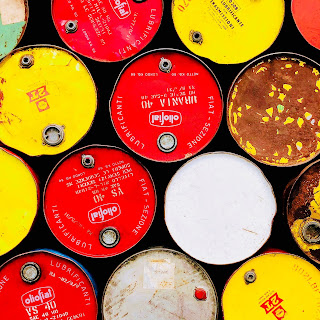New Report: Shale Development Boosting Local Government Revenues
by Randy Hildreth, Energy in Depth
Connect with us on Facebook and Twitter!
Follow @EnergyNewsBlog
Researchers at Duke University are out with a new study finding that shale development has been boosting public revenue for local governments across the country. As a news release announcing the report puts it:
“The recent surge in oil and natural gas development has been beneficial for most local governments in the United States, according to new findings by two Duke University researchers.”
The researchers spoke with “more than 200 local government officials in 61 counties and 78 municipalities” where shale development has been taking place. An example of their findings can be seen in a case study on Colorado’s Piceance Basin released alongside the report that shows dramatic increases in economic activity and public revenue in shale regions. In particular, researchers show how the City of Rifle on Colorado’s Western Slope saw an amazing spike in public revenue and economic activity as shale development in the area increased. From the case study:
“Tax revenues grew very quickly from 2002 to 2008, the peak of regional natural gas development, rising from $2.6 million to $12.4 million, led by sales taxes. A variety of capital grants, including DOLA grants from severance tax and federal mineral lease revenues, added an additional $11.6 million in 2008 (Rifle Department of Finance 2002-2013). Overall revenues grew from roughly $10 million in 2002 to a peak of $34 million in 2008.” (Emphasis added)
And along with the increased tax base, it is clear from the case study that town officials see oil and natural gas development as having a lasting impact. Also from the case study:
“Overall, the city manager describes the surge in natural gas development in the mid-2000s as a net benefit for Rifle’s fiscal health, as new businesses and buildings have boosted the city’s tax base far above the levels of the early 2000s.”
This latest research is part of a multi-year “Shale Public Finance project” from the researchers in an effort to understand how recent increases in oil and natural gas development are impacting local governments. Other “key findings” include:
- In most states where local governments levy property taxes on oil and gas property, increased industry activity has led to rapid increases in property tax receipts, especially for counties. In states where local governments are not allowed to levy taxes on oil and gas property (MT, ND, and PA), allocations of state-collected taxes/fees on production or drilling activity have been the most significant new source of revenue.
- Population growth and economic activity associated with the industry has supported or boosted sales tax revenue for many local governments, especially municipalities. Some local governments have leased county-or city-owned land for oil and gas production, generating large lease revenues.
The report does explain that not all local governments received net benefits. That’s because some were not able to keep up with the pace of infrastructure improvements needed to sustain growing populations and demand for services. But it is clear from the Colorado case study that some of the local officials they spoke with believe that the overall benefits of shale development offset the challenges. From the Colorado case study section discussing Grand Junction:
“There have been substantial oil- and gas-related costs for the city, but local officials estimate that these costs have been more than offset by oil- and gas-related revenues. For example, heavy trucks associated with oilfield service firms have caused damage to some city streets, but DOLA energy impact grants coupled with industry-related tax revenues have been sufficient to manage these costs. Grand Junction also increased its spending on municipal buildings, making upgrades to city fire and police buildings that were in need of repair. Officials state that these upgrades would not have been possible without the new revenues generated by the oil and gas industry.” (Emphasis added)
The same is true in the Bakken region where another case study released with the report showed that local officials continue to see benefits of increased oil and natural gas development in that region as well. From that case study:
“When we returned to Dunn County in late 2015, demands related to Bakken development continued to be substantial. However, the overall fiscal situation had improved markedly, and a variety of local officials unanimously agreed that the county was in stronger fiscal condition than before Bakken development began, and far stronger than during our 2013 interviews.”
As EID has reported many times before, oil and natural gas development in deep shale formations has been an economic driver for local governments, providing an important revenue stream for rural communities to fund community improvements.
So while activists fly in to states like Colorado and elsewhere in their attempts to block federal mineral lease auctions and stage protests and publicity stunts, local governments and the citizens who call these communities home are reaping the benefits of shale development.
Copyright Energy in Depth. Reprinted with permission. View original article here: http://energyindepth.org/mtn-states/new-report-shale-development-boosting-local-government-revenues/Connect with us on Facebook and Twitter!
Follow @EnergyNewsBlog


